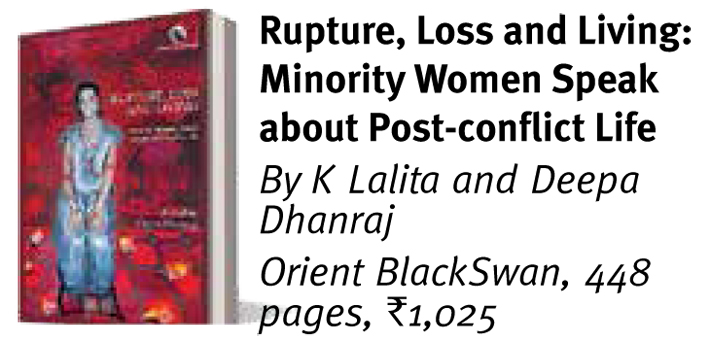The book details the everyday violence faced by Muslim women in parts of our country after a riot ends
Ever since the rise of subaltern history in India in the 1980s, there is a widespread attention to marginalised groups which were earlier ignored by mainstream historians. However, the incompleteness of this project led to pioneers like Partha Chatterjee to announce its closure as a specified project. Yet, in spite of its severe limitation, the particularistic focus on localised events and its impact on what may be called representative sampling continues to be attractive as an alternative historiography.
The present work focuses on oral history concerning communal riots with specific episodes and their impacts felt by minority Muslim women in Mumbai, Gujarat and Hyderabad. The project highlights the plight of women survivors of mass violence to redraw their essential relationships to society and the state after the change of the entire scenario. The post-conflict situation and the engagement of these women in regard to family, community, markets and the state is also examined in detail. The three-year project documented 75 life history narratives of Muslim women survivors and of 19 of them are accommodated in this book. The attention was on the poor women though women from the middle class, political and professional backgrounds have also been incorporated.

In these interviews, there is a commonality of ideas expressing the deep wounds as that followed the mass violence disrupting their lives totally. Across class and region with many differences of culture and language the total dehumanisation, and in many cases manlessness, creates permanent wounds leading to a rupture of the old scenario and bringing in a new age of uncertainty, fear and severe economic dislocation.
The essential framework of the book is provided by anthropologists which underlines the centrality of the women’s own narratives emphasising on their own experience, both in conflict and post-conflict articulations. The most important point is the realisation that their daily lives were full of violence. This emphasis leads to a startling disclosure across the research locations. We find women speaking of continuous everyday experience of violence as more traumatic, more difficult to fight and more pernicious in their impact than the trauma of conflict. This trauma leads to an endurance test in a situation of continued unresponsive and clearly hostile state institutions and community coupled with impoverishment and displacements, loss of dignity and family. The women negotiate the challenges in their own way, yet there is a common thread that unites them to charter a new course in a totally disadvantaged situation for themselves in asking the question “what it means to be Muslim in India today” (pg 7). In a vivid description where a middle-class professional Muslim woman was comfortable in her belief structure of a liberal society which she had to abandon after the 2002 riots, she takes the conscious decision that she should work with Muslim women.
A distinction also emerges: earlier riots were smaller, and homes and dignity were restored but the recent ones were more gruesome and resulted in complete dislocation. Such statements though explain the brutality of recent incidents of violence yet might not be correct in underplaying the violence and displacement of the earlier ones. For instance, the biggest riot in Gujarat was not in 2002 but in 1969 when Hitendra Desai of the Congress was the chief minister.
Such violent incidents also lead to the triumph of tradition over modernity. Amongst the increasing turbulence and insecurity of these riot-affected Muslim women “is the increased presence and mobilization of conservative schools of Islamic thought” (pg 21). The failure of the state to protect the basic human rights and property is writ large over the entire book with tales of horror and total absence of the rule of law. The book deals effectively with the immediate and long-term implications of the survivors of communal carnage at the three places. The book also highlights another significant point in comprehending the problem of Muslim women in an analytical manner.
The debate on Muslim issues in India today mainly concerns personal issues and increasing fundamentalism which is a stumbling block to the project of modernity. In restricting the debate to these issues the important ones like that of rights, accountability, citizenship, democracy, rule of law and secularism are all forgotten.
The book is an important reminder to us about the serious limitation of our social science researchers and activists to deal with issues that would really change the lives of the wretched of the earth. It also reveals the grievous fault lines in our democratic evolution and the absence of a helpful state in advancing and rooting our democracy on a firmer and an institutional manner. The book raises a number of fruitful questions; the challenge is to find out the answers.
Ramaswamy teaches political science at Jesus and Mary College, New Delhi.
The article appears in the March 1-15, 2017 issue of Governance Now)